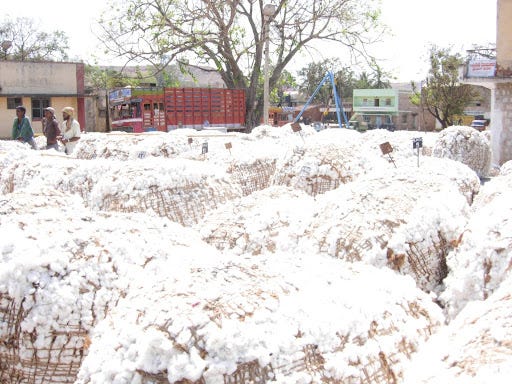Insights from Cotton Incorporated’s report on global production, trade dynamics

Cotton Incorporated’s recent report, ‘Cotton as a Possible Bellwether for Global Economies: Why International Cotton Markets Matter’, highlights the vital role cotton plays in global trade and economic forecasting. Beyond its utility as a raw material for the textile industry, the report emphasizes how cotton markets serve as a microcosm of global economic trends, reflecting shifts in consumer demand, supply chain dynamics, and geopolitical factors.
Cotton’s global significance
Cotton is one of the world’s most widely produced agricultural commodities, involving millions of farmers, manufacturers, and retailers across continents. The report underscores that fluctuations in the cotton market are closely tied to broader economic conditions. For example, changes in cotton demand often correlate with shifts in consumer spending, while price volatility can signal disruptions in trade or inflationary pressures. Cotton Incorporated notes,
“International cotton markets are more than just agricultural exchanges; they are interconnected systems reflecting global economic health.”
Production and trade dynamics
The report highlights the central role of major cotton-producing countries, including China, India, the US, and Brazil. These nations collectively account for over 75 per cent of global cotton output.
China remains the largest producer and consumer of cotton, heavily influencing global trade patterns.
India has seen consistent growth in cotton production, driven by government subsidies and robust domestic demand for textiles. The study highlights India's growing importance in the global cotton market. With a projected increase in both production and mill use, India is poised to play a significant role in meeting global cotton demand. China remains the world's largest consumer of cotton. However, the study notes that recent policy changes and shifts in domestic consumption patterns could impact China's cotton imports in the coming years.
United States continues to dominate exports, with innovations in cotton farming and quality control maintaining its competitive edge.
Table: Cotton production
|
Region |
Production (mn bales) |
Mill use (mn bales) |
|
World |
119.5 |
115.9 |
|
United States |
18.5 |
3.3 |
|
India |
26.5 |
25 |
|
China |
30 |
39 |
Cotton as an economic indicator
Cotton prices and trade volumes have historically aligned with global economic cycles. For instance, rising cotton prices often signal increased consumer spending on apparel and home goods, indicating economic recovery. Conversely, a drop in demand for cotton during economic downturns highlights shrinking consumer confidence.
Cotton Incorporated forecasts stable cotton prices in 2025, a welcome change from recent volatility. This stability is crucial for Indian farmers who have faced fluctuating incomes due to unpredictable market conditions. Experts point out this stability should enable better planning for Indian cotton growers. Predictable pricing allows farmers to make informed decisions about planting and invest in their operations with greater confidence.
Impact of global events
The pandemic disrupted global cotton supply chains, reducing demand for textiles and causing price instability. Trade disputes, particularly between the US and China, have reshaped global cotton trade, with ripple effects across other economies.
The report also acknowledges India's position as the second largest cotton grower globally. While acknowledging recent weather challenges impacting Indian production, the report highlights the role of India's Minimum Support Price (MSP) system in supporting farmers' livelihoods. The report also points out challenges for India, including the potential for government-held cotton stocks to be released into the market at a loss, impacting prices. However, the projected increase in global mill use, particularly in countries like China, offers a significant opportunity for India to increase exports and strengthen its position in the global cotton value chain. "Indian textile manufacturers should capitalize on this growing demand by focusing on quality and sustainability to compete effectively in the international market."
The findings have significant implications for various stakeholders in the cotton value chain, including farmers, textile mills, and consumers. Understanding the dynamics of the global cotton market is crucial for making informed decisions and navigating the challenges and opportunities that lie ahead.
